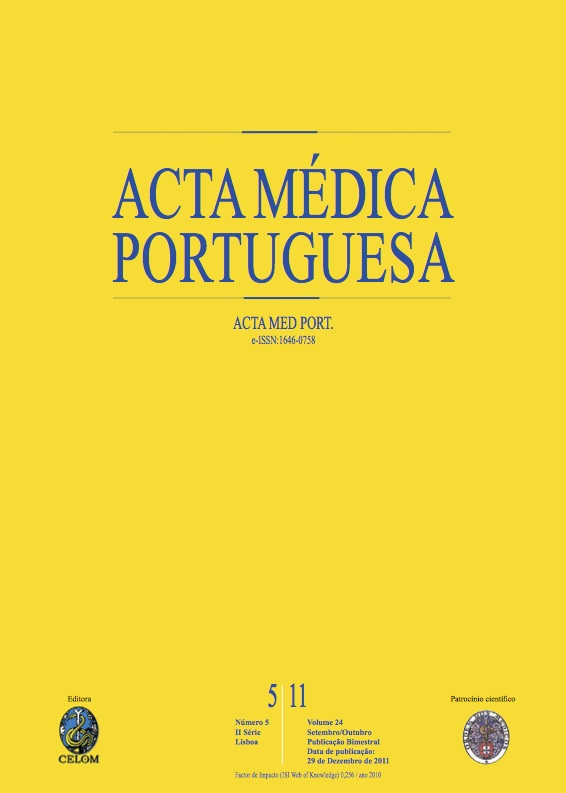Aneurisma da aorta abdominal: uma apresentação pouco frequente.
DOI:
https://doi.org/10.20344/amp.496Resumo
Most abdominal aortic aneurysms are asymptomatic, being accidentally found on physical examination or in routinely performed imaging studies. They only require surveillance (which is variable according to the aneurism size) and medical therapy in order to achieve risk factor reduction. However, in certain situations, according to the risk of aneurism rupture, elective surgery or endovascular procedure may be necessary. About 80% of the cases of aneurism rupture occur into the retroperitoneal space, with a high mortality rate. There are uncommon presentations of aneurism rupture as the aorto-caval fistula, which also require fast diagnosis and intervention. The authors present the case of a 71-year-old man, with the previous diagnosis of hypertension, acute myocardial infarction 2 months earlier (undergone primary Percutaneous Coronary Intervention) and tabagism, who was admitted at the emergency department with intense 24-hour-evolution epigastric pain. On physical examination, the Blood Pressure values measured at the lower limbs were about half the ones measured at the upper limbs and there was an abdominal pulsatile mass, with a high-intensity murmur. As the authors suspected aortic dissection, aneurysm, coarctation or thrombosis, it was done a Computed Tomography scanning with intravenous contrast, which revealed a ruptured abdominal aorta aneurysm with a mural thrombus. The doppler ultrasound confirmed the presence of a high debit aorto-caval fistula. The patient was immediately transferred to the Vascular Surgery. However he died 2 hours later, during surgery.Downloads
Downloads
Como Citar
Edição
Secção
Licença
Todos os artigos publicados na AMP são de acesso aberto e cumprem os requisitos das agências de financiamento ou instituições académicas. Relativamente à utilização por terceiros a AMP rege-se pelos termos da licença Creative Commons ‘Atribuição – Uso Não-Comercial – (CC-BY-NC)’.
É da responsabilidade do autor obter permissão para reproduzir figuras, tabelas, etc., de outras publicações. Após a aceitação de um artigo, os autores serão convidados a preencher uma “Declaração de Responsabilidade Autoral e Partilha de Direitos de Autor “(http://www.actamedicaportuguesa.com/info/AMP-NormasPublicacao.pdf) e a “Declaração de Potenciais Conflitos de Interesse” (http://www.icmje.org/conflicts-of-interest) do ICMJE. Será enviado um e-mail ao autor correspondente, confirmando a receção do manuscrito.
Após a publicação, os autores ficam autorizados a disponibilizar os seus artigos em repositórios das suas instituições de origem, desde que mencionem sempre onde foram publicados e de acordo com a licença Creative Commons









